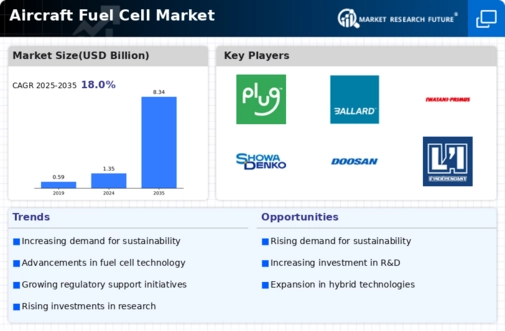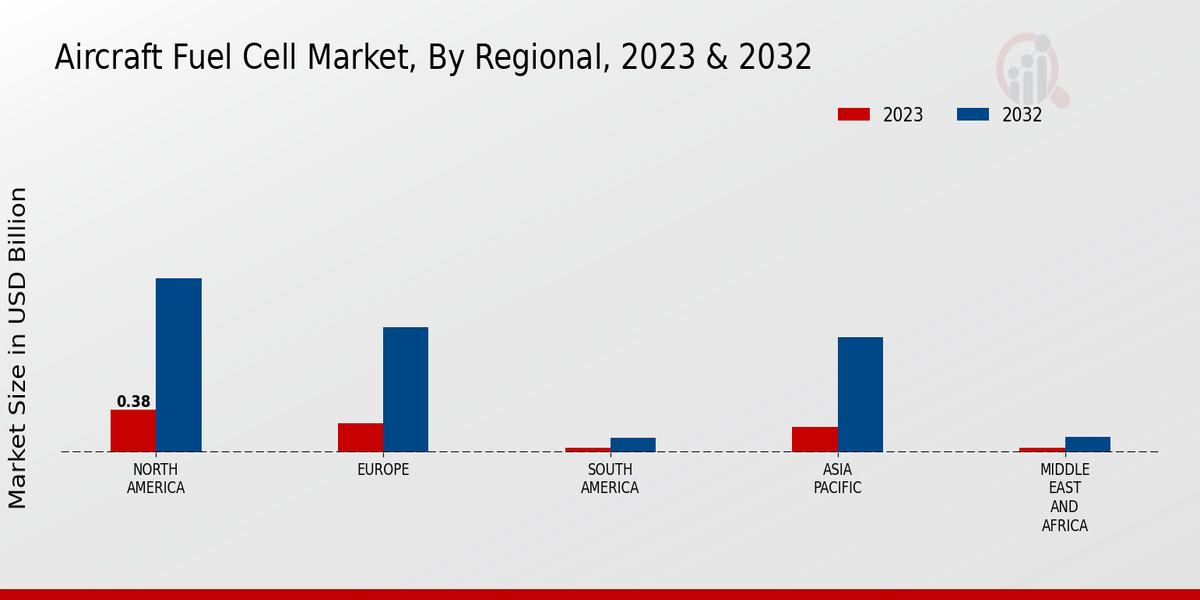Market Growth Projections
The Global Aircraft Fuel Cell Market Industry is poised for substantial growth, with projections indicating a rise from 1.35 USD Billion in 2024 to 8.34 USD Billion by 2035. This growth trajectory suggests a compound annual growth rate (CAGR) of 18.01% from 2025 to 2035. The increasing focus on sustainable aviation solutions, coupled with advancements in fuel cell technology and supportive government policies, is likely to drive this expansion. As the industry evolves, the integration of fuel cells into various aircraft types may become more prevalent, reflecting a broader shift towards cleaner energy sources in aviation.
Government Initiatives and Funding
Government support plays a crucial role in the expansion of the Global Aircraft Fuel Cell Market Industry. Various countries are investing in research and development initiatives aimed at promoting fuel cell technology in aviation. For example, funding programs and partnerships between government agencies and private companies are fostering innovation. This financial backing is essential for overcoming the initial high costs associated with fuel cell development. As a result, the market is likely to witness accelerated growth, with a projected CAGR of 18.01% from 2025 to 2035, indicating strong governmental commitment to sustainable aviation.
Growing Demand for Sustainable Aviation
The Global Aircraft Fuel Cell Market Industry is experiencing a notable shift towards sustainable aviation solutions. As environmental concerns intensify, airlines and manufacturers are increasingly seeking alternatives to traditional fossil fuels. Fuel cells, which emit only water vapor, present a viable solution. The market is projected to reach 1.35 USD Billion in 2024, driven by regulatory pressures and consumer demand for greener travel options. This transition aligns with global initiatives aimed at reducing carbon emissions in the aviation sector, suggesting a robust growth trajectory for fuel cell technologies.
Technological Advancements in Fuel Cell Systems
Technological innovations are propelling the Global Aircraft Fuel Cell Market Industry forward. Recent advancements in fuel cell efficiency and durability are making these systems more viable for aviation applications. For instance, improvements in hydrogen storage and fuel cell stack designs are enhancing performance metrics. As a result, the market is expected to grow significantly, potentially reaching 8.34 USD Billion by 2035. These advancements not only improve operational efficiency but also reduce weight and increase the range of aircraft, making fuel cells an attractive option for manufacturers and operators alike.
Increasing Investment in Hydrogen Infrastructure
The development of hydrogen infrastructure is vital for the success of the Global Aircraft Fuel Cell Market Industry. As fuel cells rely on hydrogen as a primary energy source, the establishment of refueling stations and production facilities is essential. Investments in hydrogen production, storage, and distribution networks are increasing globally, driven by both public and private sectors. This infrastructure development is expected to facilitate the adoption of fuel cell technologies in aviation, thereby enhancing market growth. The synergy between hydrogen infrastructure and fuel cell advancements could lead to a more integrated and efficient aviation ecosystem.
Collaborations and Partnerships in the Aviation Sector
Collaborative efforts among stakeholders in the aviation industry are shaping the Global Aircraft Fuel Cell Market Industry. Partnerships between aircraft manufacturers, fuel cell developers, and research institutions are fostering innovation and accelerating the commercialization of fuel cell technologies. These collaborations often focus on joint research projects and pilot programs aimed at demonstrating the feasibility of fuel cells in aviation. Such initiatives are crucial for building confidence among investors and operators, potentially leading to increased market penetration. The collective expertise and resources of these partnerships are likely to drive the industry towards a more sustainable future.















